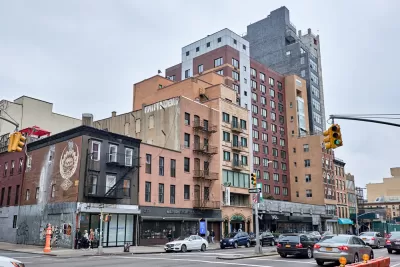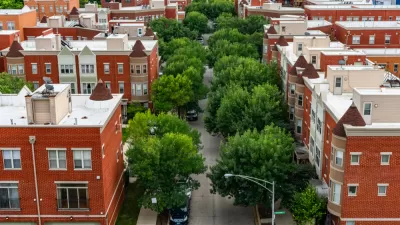A new metric for measuring land use regulation traces the evolution of land use regulations over the past decade, finding that U.S. municipalities on a net basis adopted slightly more restrictive land use regulations from 2006 to 2018.

New analysis published by the National Bureau of Economic Research reports results of a new survey of local residential land use regulatory regimes for over 2,450 primarily suburban communities across the United States.
The paywalled research, authored by Joseph Gorko, Jonathan Hartey, and Jacob Krimmel, locates the most highly regulated markets on the two coasts, "with the San Francisco and New York City metropolitan areas being the most highly regulated according to our metric," according to the abstract for the paper.
The remainder of the abstract reads as follows:
Comparing our new data to that from a previous survey finds that the housing bust associated with the Great Recession did not lead any major market that previously was highly regulated to reverse course and deregulate to any significant extent. Moreover, regulation in most large coastal markets increased over time.
John Hartley shared more findings from the study, titled " The Local Residential Land Use Regulatory Environment Across U.S. Housing Markets: Evidence from a New Wharton Index," on a Twitter thread.
My latest working paper in @nberpubs w/ @jkrimmel and Joe Gyourko on how zoning/land use regs have changed since the Great Recession: “The Local Residential Land Use Regulatory Environment Across U.S. Housing Markets: Evidence from a New Wharton Index” https://t.co/h1ZHawXp9d pic.twitter.com/k5yRCeisYJ
— Jon Hartley (@Jon_Hartley_) December 23, 2019

Planetizen Federal Action Tracker
A weekly monitor of how Trump’s orders and actions are impacting planners and planning in America.

Maui's Vacation Rental Debate Turns Ugly
Verbal attacks, misinformation campaigns and fistfights plague a high-stakes debate to convert thousands of vacation rentals into long-term housing.

San Francisco Suspends Traffic Calming Amidst Record Deaths
Citing “a challenging fiscal landscape,” the city will cease the program on the heels of 42 traffic deaths, including 24 pedestrians.

Defunct Pittsburgh Power Plant to Become Residential Tower
A decommissioned steam heat plant will be redeveloped into almost 100 affordable housing units.

Trump Prompts Restructuring of Transportation Research Board in “Unprecedented Overreach”
The TRB has eliminated more than half of its committees including those focused on climate, equity, and cities.

Amtrak Rolls Out New Orleans to Alabama “Mardi Gras” Train
The new service will operate morning and evening departures between Mobile and New Orleans.
Urban Design for Planners 1: Software Tools
This six-course series explores essential urban design concepts using open source software and equips planners with the tools they need to participate fully in the urban design process.
Planning for Universal Design
Learn the tools for implementing Universal Design in planning regulations.
Heyer Gruel & Associates PA
JM Goldson LLC
Custer County Colorado
City of Camden Redevelopment Agency
City of Astoria
Transportation Research & Education Center (TREC) at Portland State University
Jefferson Parish Government
Camden Redevelopment Agency
City of Claremont





























